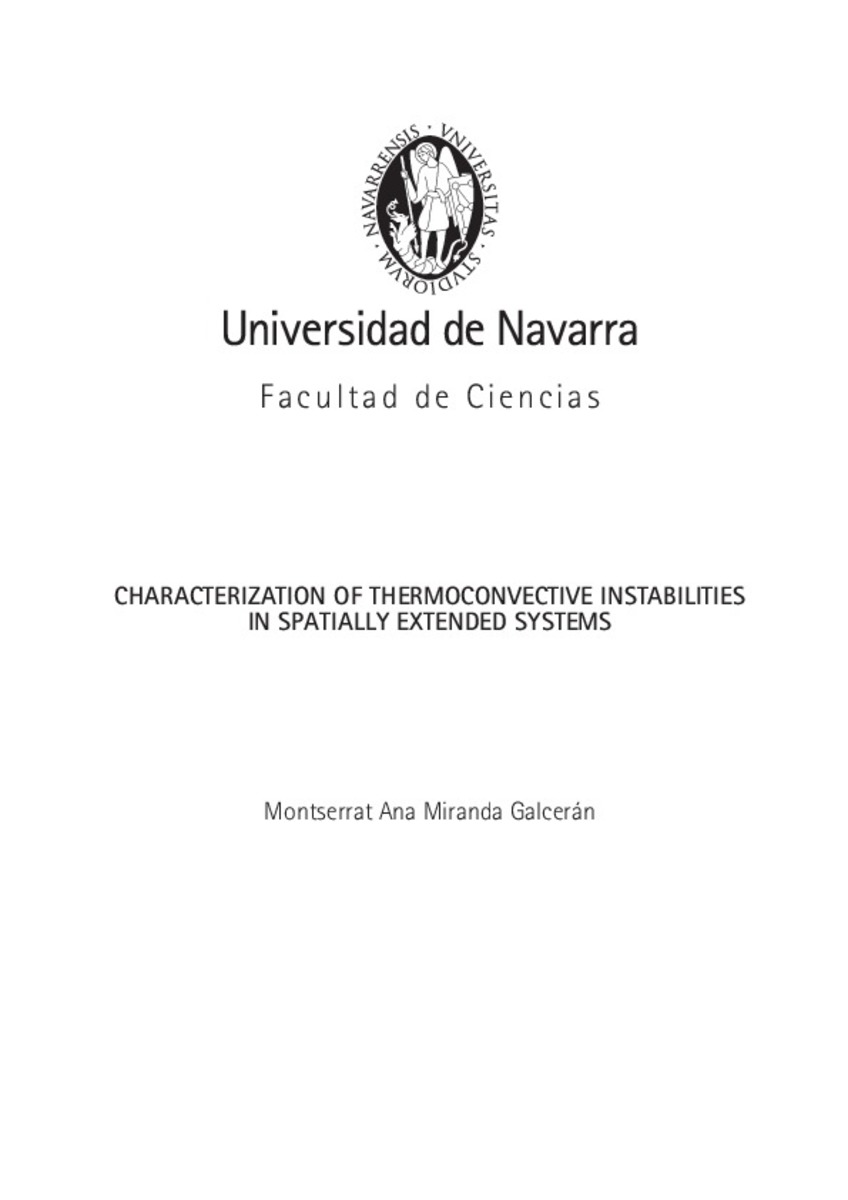Full metadata record
| DC Field | Value | Language |
|---|---|---|
| dc.contributor.advisor | Burguete-Mas, F.J. (Francisco Javier) | - |
| dc.creator | Miranda, M.A. (Montserrat A.) | - |
| dc.date.accessioned | 2010-07-16T10:26:32Z | - |
| dc.date.available | 2010-07-16T10:26:32Z | - |
| dc.date.issued | 2010 | - |
| dc.date.submitted | 2009-06 | - |
| dc.identifier.citation | MIRANDA GALCERÁN, Montserrat Ana. “Characterization of thermoconvective instabilities in spatially extended Systems”. Burguete Mas, Javier. Tesis doctoral. Universidad de Navarra, Pamplona, 2009 | es_ES |
| dc.identifier.isbn | 978-84-692-4266-7 | - |
| dc.identifier.uri | https://hdl.handle.net/10171/7435 | - |
| dc.description.abstract | This experimental work contributes to widen the understanding of the dynamics of spatially extended and dissipative systems. By means of two different convective systems (1D and 2D) we explore the dynamics by modifying localized temperature gradients and characterize quantitatively the nature of the instabilities the systems go through. The 1D-system is a rectangular fluid layer opened to the atmosphere and subjected to a quasi-1D heating from below and along a central line in the largest direction. The 2D-system is a cylindrical fluid layer subjected to a radial temperature gradient between an inner core and the external rim. In both systems, instabilities depend on the depth of the fluid layer and are driven by vertical temperature gradients in the 1D-system and by radial and vertical temperature gradients in the 2D-system. From the primary instability, these systems undergo a cascade of secondary bifurcations towards turbulent or disordered regimes. Instabilities from the homogeneous pattern (with continuous translation symmetry in the direction parallel to the heating line) are found to be supercritical in both systems. The 1D-system, from a stationary cellular pattern (ST) with wave number q, bifurcates subcritically towards a mixed pattern where irregular time-dependent clusters (ALT), with a doubled wave length q/2, coexist with ST; and towards traveling waves (TW) with 2q/3. We particularly focus on the spatiotemporal beating regime (ST/ZZ) characterized by the presence of stationary clusters which emerge from a spatiotemporal splitting of the critical modes. Close to the threshold, a global analysis of the convective field allows us to discover the supercritical nature of this instability. Far from the threshold, a discrete analysis over 50 convective oscillators shows that a global phase synchronization transition has been produced from a nonlocal coupling. | es_ES |
| dc.language.iso | eng | es_ES |
| dc.publisher | Departamento de Física y Matemática Aplicada. Universidad de Navarra | es_ES |
| dc.rights | info:eu-repo/semantics/openAccess | es_ES |
| dc.subject | Materias Investigacion::Física | es_ES |
| dc.title | Characterization of thermoconvective instabilities in spatially extended systems | es_ES |
| dc.type | info:eu-repo/semantics/doctoralThesis | es_ES |
Files in This Item:
Statistics and impact
Items in Dadun are protected by copyright, with all rights reserved, unless otherwise indicated.






